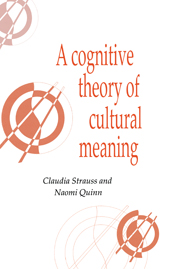Book contents
- Frontmatter
- Contents
- List of figures
- List of tables
- Acknowledgments
- Part I Background
- Part II Implications for a theory of culture
- Part III Practice and possibilities
- 6 Research on shared task solutions
- 7 Research on the psychodynamics of shared understandings
- 8 Research on cultural discontinuities
- 9 Beyond old oppositions
- Notes
- References
- General index
- Name index
8 - Research on cultural discontinuities
Published online by Cambridge University Press: 05 June 2012
- Frontmatter
- Contents
- List of figures
- List of tables
- Acknowledgments
- Part I Background
- Part II Implications for a theory of culture
- Part III Practice and possibilities
- 6 Research on shared task solutions
- 7 Research on the psychodynamics of shared understandings
- 8 Research on cultural discontinuities
- 9 Beyond old oppositions
- Notes
- References
- General index
- Name index
Summary
When I was an undergraduate, I wanted to understand where people's beliefs come from, and I devised an interdisciplinary major with the awkward title, “World Views and Forces Which Shape Them,” to study this. As a graduate student in anthropology I was taught that beliefs are culturally constructed. The phrase “culturally constructed,” however, glosses over a complex process in which beliefs of very different sorts are learned from practices and discourses of very different sorts. Some of these practices and discourses are mutually reinforcing in their messages, others contradictory. Some leave us with fully formulated ideas, while others leave us something much vaguer (Sperber 1985b). Some are explicitly pedagogical, others inform only implicitly, and still others are deliberately obfuscating (Kluckhohn 1941, 1943; LeVine 1984). Some are emotionally fraught, others inform but do not engage us (Spiro 1984, 1987a). Finally, some present unrealizable ideals, others illustrate what really happens, still others suggest bygone or emerging possibilities (Williams 1977). Metaphors of culture as “structure,” “text,” or “discourse” did not do justice to this complexity. Eventually I became suspicious of theories that flattened culture and reduced it to a single kind of thing and was attracted instead to discussions of culture acquisition that took the perspective of learners exposed to a variety of practices and discourses. Such challenges to notions of culture as a tidy system were around before the current poststructuralist and postmodern critique of the culture concept; among anthropologists, for example, there was the insightful work of Barth (1975, 1983), Sperber (1975, 1985a, 1985b), and Wallace (1970).
- Type
- Chapter
- Information
- A Cognitive Theory of Cultural Meaning , pp. 210 - 251Publisher: Cambridge University PressPrint publication year: 1998
- 3
- Cited by

